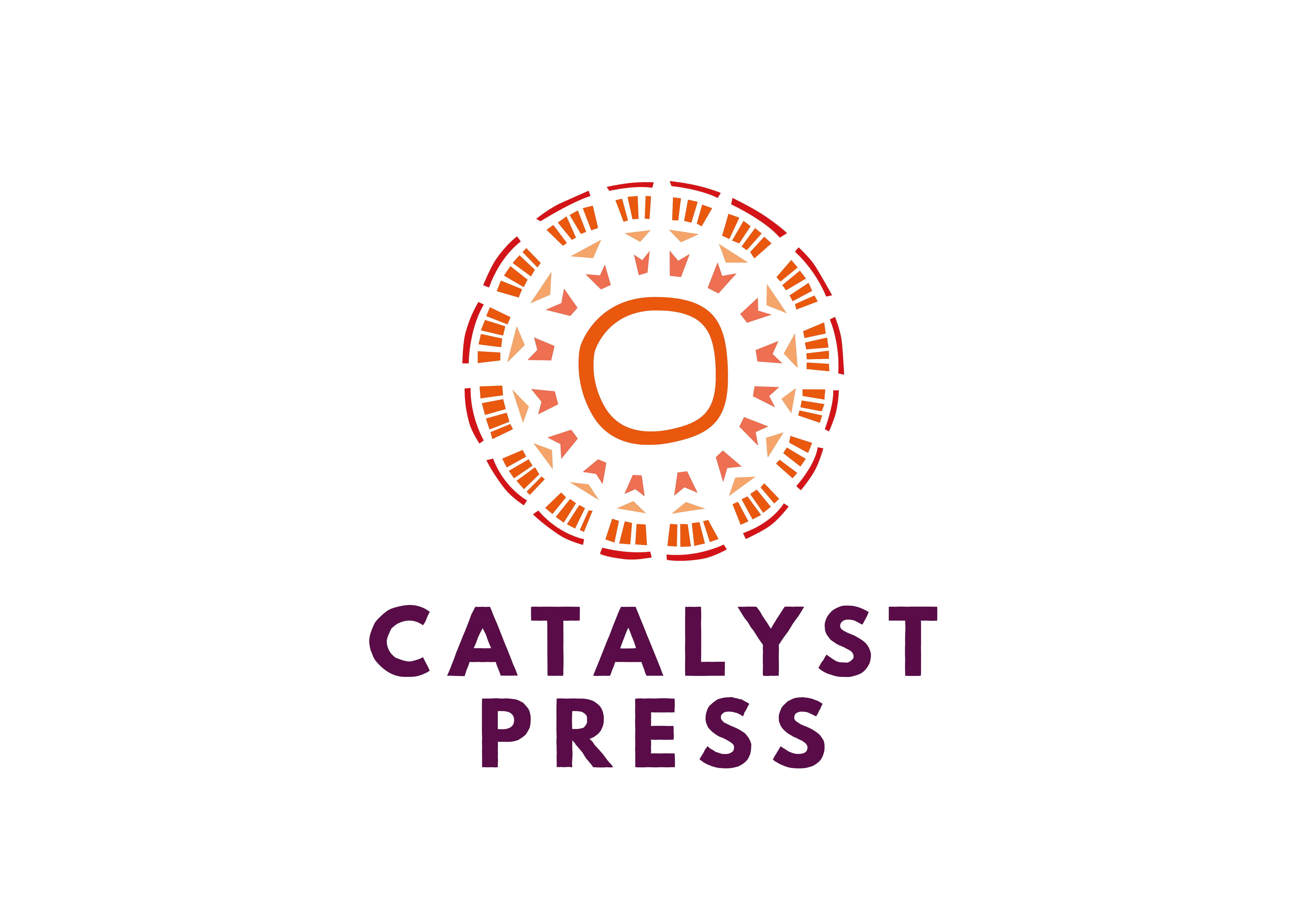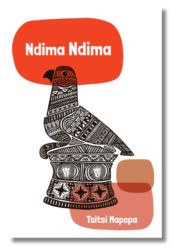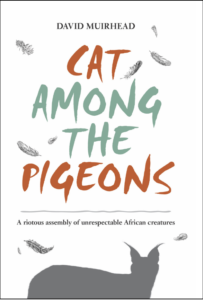 This year, we’re excited to publish the first release from our science-focused Powers Squared imprint. The books released under the Powers Squared banner will feature fun, accessible science writing with an eye on global events that will appeal to a diverse group of readers.
This year, we’re excited to publish the first release from our science-focused Powers Squared imprint. The books released under the Powers Squared banner will feature fun, accessible science writing with an eye on global events that will appeal to a diverse group of readers.
Our first release is a fun one: Cat Among the Pigeons by David Muirhead. This collection of short essays features the science, myth, and folklore behind a host of African animals. Featuring illustrations by Patricia de Villiers, Cat Among the Pigeons is a look at the creatures we share the world with, told with a bit of humor and whimsy. Sy Montgomery, author of Tamed and Untamed: Close Encounters of the Animal Kind praised the book, writing “this clever, breezy book delivers delightful surprises on every page, along with a bracing dose of wonder.”
Matt Powers, the editor for Powers Squared, did this Q&A with David where they covered obscure animals, our relationship with wildlife, and how each of us plays a role in their survival. Cat Among the Pigeons releases on February 4, and pre-orders are available now.
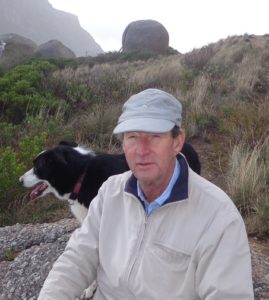
David, you grew up in East Africa and Great Britain and spent your adult life traveling all over the continent of Africa and living in South Africa. How did you become so interested in African wildlife? What experiences led you to writing Cat Among the Pigeons?
When I was a very small boy living in Mbale in Uganda there was a leopard in the forest abutting the bottom of our garden. The leopard and I had an understanding: I’d stay away from the bottom of the garden and the leopard wouldn’t climb through my bedroom window at night. I think my dad negotiated that deal, but anyway it worked, because I’m still here today. I grew up with African wildlife, in and outside game reserves, so I was fascinated from the very beginning. I didn’t get actively involved with conservation and writing about wildlife until 1999 when I founded a magazine called Wildside in partnership with KwaZulu Natal Nature Conservation, then headed up by Dr. George Hughes, who was one of the world’s leading authorities on sea turtles. They were also the people responsible for saving the white rhino from imminent extinction in the 1950s. I learned a lot interacting with rangers and other people working at KZN Wildlife (as it later became known) whilst researching articles in the field for the magazine, and that eventually led me to write the book.
Unfortunately, I am like many Americans and have not had the privilege to visit Africa. But almost to a person, those lucky enough to have made the pilgrimage have an amazing story about the fauna of the continent. What do you think it is about the wildlife of Africa that sparks the imagination of Homo sapiens?
I think Africa’s wild animals are, in a visceral sense, familiar to all of us, whether we’ve been to Africa or not. It’s generally accepted that Africa was the birthplace of the human race, the nursery where we took our first baby steps as a species – the connection we feel for Africa’s landscapes and wildlife is part of our DNA. That’s where we grew up and they’re the neighbours we interacted with. I’m often struck by the fact that children’s nurseries – in the US, Europe or wherever – often feature toy elephants, lions, giraffes, hippos and the like. It’s a bit fanciful, I know, but maybe not merely a coincidence that so many parents feel that their kids will be comforted by such animals, nor surprising that they are.
I have a number of graduate student friends from Africa and also American relatives and friends who have spent considerable time in Africa and they all have a story that goes something like this… “To our surprise, around the corner was a bull elephant walking toward us, flapping his ears in the middle of the mountain pass, a cliff wall on our right and a 100 foot drop on our left. Unfortunately for us, we had stripped the reverse gear out of our Land Rover earlier in the trip and… …I could hear the lions sniffing and prowling outside. All I had for defense was a small pocket knife which I clutched to my chest, staring at the flimsy canvas wall of my tent… …We were sitting around the low table in the middle of camp, sharing our meal with a Maasai who had wandered into camp. Suddenly, he jumped up and started beating the ground with his spear. When the dust settled, at his feet lay the corpse of the deadly… …My cousin’s husband’s mother’s best friend’s child was looking for firewood one night when he was charged by a rhino. As he dodged, a boomslang landed on his head and bit him on the cheek. The sudden pain caused him to panic and he ran the wrong way, falling into the river where a hippo bit his arm off. Fortunately for him, he was able to escape before the crocodiles got the rest of him… …Then, out of nowhere, a baboon… “
Okay, I did make up one of these stories. So, I want to know, what is the craziest story about animals in Africa that you have heard or experienced?
One true story I’m particularly fond of involves a good friend. When she was a baby her family lived near Port Elizabeth on the east coast of South Africa. Baboons frequently raided the rural area where they lived, sorting through dustbins and sometimes barging into houses looking for food. One morning a female baboon picked up the baby (later my good friend) from a pram on the veranda. The kidnapping was witnessed by a gardener who immediately raised the alarm and gave chase. The baboon ran up a drainpipe onto the roof and sat there, alternatively examining the baby in her arms and glancing down disdainfully at the hysterical humans gathered down below. The only one who kept his cool was Grandpa. He got hold of an orange and, despite his age and creaking joints, somehow managed to get up onto the roof himself. He then negotiated with the female baboon, offering the orange in exchange for the baby. Grandpa could tell by the baboon’s hesitation that it was a tough choice, but in the end she did hand over the baby and scampered away with the orange. The baby was none the worse for wear.
Every time I read Cat Among the Pigeons, I learn something new about the animals of Africa. My favorite stories are about the more obscure animals, the more mundane. What made you include the less splashy fauna of Africa such as the coelacanth and naked mole rats?
Most people are familiar with the big name animals – lions, elephants, etc – and I wanted to introduce the supporting cast, so to speak, the backstage characters like the aardvark. As I wrote in the book, by discarding the burrows they’ve dug aardvarks provide subterranean homes for a host of other creatures, and the African bush would be a very different place without them. But you could live your whole life in Africa without ever laying eyes on an aardvark. It’s like that with many of the more obscure creatures, they’re not high profile but they’ve all got a fascinating story to tell and their role in the ecosystem is often woefully underestimated or misunderstood.
I have to confess that my absolute favorite chapter in the book is about the dung beetle! I laughed and laughed but also appreciated the bug’s weird and wonderful life. What was your favorite chapter to write and why?
I enjoyed writing all the stories, but some were especially challenging and fun to research. If I had to pick a favorite chapter I suppose it would be the flamingo.
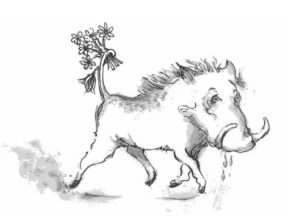
I don’t believe your book is about animals of Africa. I believe Cat Among the Pigeons is about relationships. It is about the relationships of animals with each other, with their ecosystem, and ultimately humanity’s relationship with our world. From your perspective, what is your assessment of the health of these relationships? Is there anything that gives you hope for the future of our planet and the animals that still exist here?
You’re right, in a very real sense the book is about relationships, what’s popularly known as the web of life I suppose. Everything to do with living creatures is about the relationship, intimate or tenuous, between each individual species and the myriad others, and that includes Homo sapiens. We made a mistake about ten or twenty thousand years ago by starting to think we were the only species that really mattered. The rest were expendable dumbasses. Only now are we beginning to realize what a huge mistake that was, for them and for us.
One thing that gives me hope is knowing that around the world there are people I’ve never heard of doing meaningful things I may never hear about. It’s easy to grow cynical and think that no one really cares what happens to African wild life but that’s short changing the good guys. I’ll give you one example: right now there are two rangers somewhere remote in the bush, sleeping rough, paid next to nothing, on a two month shift. I’ve never met them, don’t know their names, but they’re taking turns guarding and protecting one female rhino and her calf, following them around day and night, rain or shine. If the poachers come they’ll probably be outgunned six to one, but I’m sure they’ll stand their ground. Those sorts of people really care, and that’s what gives me hope.
What can readers do to help protect the wildlife of Africa for future generations of humans?
The one big thing humans in general can do is restrict themselves to a maximum of two children. The explosive growth in human numbers is the single greatest threat to wild life and ecosystems in Africa, and everywhere else on the planet for that matter. There’s only so much space and it’s filling up too fast – with Homo sapiens and all their noxious by-products.
On an individual level, people can certainly help by giving material and vociferous support to nature conservation agencies in African countries through social media and organizations like the World Wildlife Fund. Conservation agencies are chronically under-resourced and beleaguered in most countries, not least thanks to their own corrupt or disinterested politicians. Yet these organizations are on the front line, their staff battling and sometimes dying to protect Africa’s wildlife from poaching and rapacious human greed, often dressed up as economic development. They are fighting an insatiable monster and they need all the help they can get.
Even in Africa there is an increasing and alarming disconnect between people and wild life. As much as they’re able, conservation agencies run outreach programmes to educate school kids in Africa about nature and help inculcate a love for wild life and natural spaces. It’s a drop in the ocean at the moment but education is key and both schools and conservation agencies could do infinitely more in this area, if they had more resources.
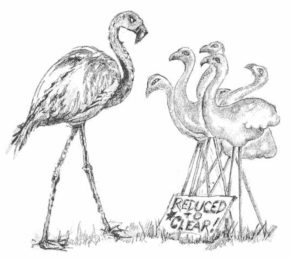 The book has a lot of scientific/biological info, but it’s not written specifically for scientists. How do you balance the science with the art so that the book is both science-y and entertaining?
The book has a lot of scientific/biological info, but it’s not written specifically for scientists. How do you balance the science with the art so that the book is both science-y and entertaining?
Basic zoological and biological facts are essential in understanding any animal of course, but I wanted to avoid the usual formula – height, weight, color, number of teeth, etc. Like us, animals are so much more than a list of their parts, and, like us, each one is an individual. Anyone who works with animals, or has a dog or a cat, knows that’s true. But the courtesy is not usually extended to wild life and I decided to use humor, folklore, and any other bits and pieces I could get my hands on, to try and bring each creature to life in a relatable way. The aim of the book is to entertain and inform but I hope readers, scientists and lay folk alike, will come away with a more empathetic view, especially in respect of the superficially less appealing creatures.
Is there anything you would like to tell your audience about Cat Among the Pigeons or Africa in general?
I would urge anyone who hasn’t been to Africa to make the trip at some point in their lives, if they’re able to. You used the word “pilgrimage” earlier, and I think that’s very revealing. If you’ve read the book and enjoyed it, a holiday in Africa is a chance to see some of the animals I’ve written about, a magical thing in itself, but at the same time it’s also a way to contribute to their survival. The money tourists spend on accommodation, game drives and the like while they’re visiting Africa is one of the principle factors helping ensure that the huge animal sanctuaries like Kruger and Serengeti can continue to exist.
